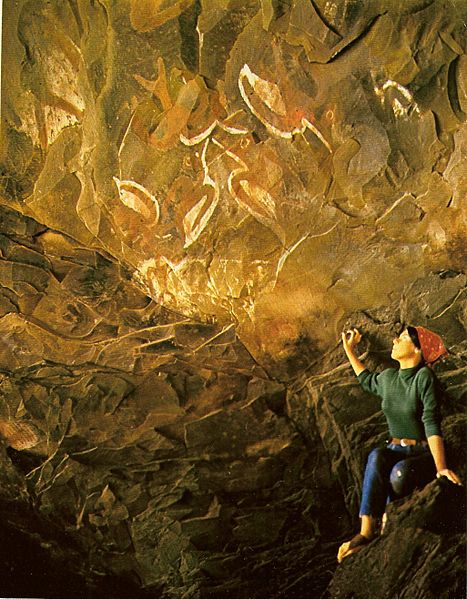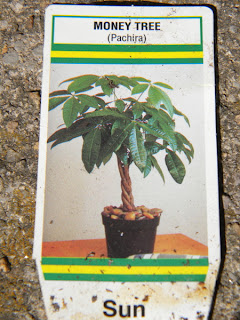Thoughts of Easter & A Reflection of Histories - Worlds Apart
 The Easter Bunny of Western European legend brings baskets filled with colored eggs, candy and sometimes also toys to the homes of children on the night before Easter. It will either put the baskets in a designated place or hide them somewhere in the house or garden for the children to find when they wake up in the morning. According to the tradition, children would build brightly colored nests, often out of caps and bonnets, in secluded areas of their homes. The Easter Bunny would, if the children had been good, lay brightly colored eggs in the nest. As the tradition spread, the nest has become the manufactured, modern Easter basket, and the placing of the nest in a secluded area has become the tradition of hiding baskets. The precise origin of the ancient custom of coloring eggs is not known, although evidently the blooming of many flowers in spring coincides with the use of the fertility symbol of eggs - and eggs boiled with some flowers change their color, bringing the spring into the homes. Many Christians of the Eastern Orthodox Church to this day typically dye their Easter eggs red, the color of blood, in recognition of the blood of the sacrificed Christ (and, of the renewal of life in springtime). Some also use the color green, in honor of the new foliage emerging after the long dead time of winter. German Protestants wanted to retain the Catholic custom of eating colored eggs for Easter, but did not want to introduce their children to the Catholic rite of fasting. Eggs were forbidden to Catholics during the fast of Lent, which was the reason for the abundance of eggs at Easter time.
The Easter Bunny of Western European legend brings baskets filled with colored eggs, candy and sometimes also toys to the homes of children on the night before Easter. It will either put the baskets in a designated place or hide them somewhere in the house or garden for the children to find when they wake up in the morning. According to the tradition, children would build brightly colored nests, often out of caps and bonnets, in secluded areas of their homes. The Easter Bunny would, if the children had been good, lay brightly colored eggs in the nest. As the tradition spread, the nest has become the manufactured, modern Easter basket, and the placing of the nest in a secluded area has become the tradition of hiding baskets. The precise origin of the ancient custom of coloring eggs is not known, although evidently the blooming of many flowers in spring coincides with the use of the fertility symbol of eggs - and eggs boiled with some flowers change their color, bringing the spring into the homes. Many Christians of the Eastern Orthodox Church to this day typically dye their Easter eggs red, the color of blood, in recognition of the blood of the sacrificed Christ (and, of the renewal of life in springtime). Some also use the color green, in honor of the new foliage emerging after the long dead time of winter. German Protestants wanted to retain the Catholic custom of eating colored eggs for Easter, but did not want to introduce their children to the Catholic rite of fasting. Eggs were forbidden to Catholics during the fast of Lent, which was the reason for the abundance of eggs at Easter time. In sharp contrast, on the other side of the world, the Tangata manu (bird-man), was the winner of a traditional competition on Easter Island (Rapa Nui ). The ritual was an annual competition to collect the first Sooty Tern (manu tara) egg of the season from the islet of Motu Nui, swim back to Rapa Nui and climb the sea cliff of Rano Kau to the clifftop village of Orongo. Contestants were revealed in dreams by ivi-attuas (individuals with the gift of prophecy). The contestants would each appoint a Hopu who would swim to Motu Nui and fetch them the Egg, whilst the contestants waited at Orongo. The race was very dangerous and many Hopu were killed by sharks, drowning or by falling. Once the first egg was collected, the final task would be for the unsuccessful contestants to return to Orongo, the winner allowed to remain in Motu Nui until he felt spiritually prepared to return. On his return he would present the egg to his patron, who had already shaved his head and painted it either white or red. The successful man would be declared Tangata-Manu, would take the egg in his hand and lead a procession down the slope of Rano Kau and on either to Anakena if he was from the western clans or Rano Raraku if he was from the eastern clans. Once in residence there he was tapu (taboo) for the next five months of his year-long status, and allowed his nails to grow and wore a headdress of human hair. The new Tangata-Manu was given a new name, entitled to gifts of food and other tributes (including his clan having sole rights to collect that season's harvest of wild bird eggs and fledglings from Motu Nui), and went into seclusion for a year in a special ceremonial house. Unlike the incorporation of the ancient fertility symbolism of eggs and bunnies of the European cultures into the Easter holiday as we know it today, the Birdman cult was suppressed by Christian missionaries in the 1860s.
In sharp contrast, on the other side of the world, the Tangata manu (bird-man), was the winner of a traditional competition on Easter Island (Rapa Nui ). The ritual was an annual competition to collect the first Sooty Tern (manu tara) egg of the season from the islet of Motu Nui, swim back to Rapa Nui and climb the sea cliff of Rano Kau to the clifftop village of Orongo. Contestants were revealed in dreams by ivi-attuas (individuals with the gift of prophecy). The contestants would each appoint a Hopu who would swim to Motu Nui and fetch them the Egg, whilst the contestants waited at Orongo. The race was very dangerous and many Hopu were killed by sharks, drowning or by falling. Once the first egg was collected, the final task would be for the unsuccessful contestants to return to Orongo, the winner allowed to remain in Motu Nui until he felt spiritually prepared to return. On his return he would present the egg to his patron, who had already shaved his head and painted it either white or red. The successful man would be declared Tangata-Manu, would take the egg in his hand and lead a procession down the slope of Rano Kau and on either to Anakena if he was from the western clans or Rano Raraku if he was from the eastern clans. Once in residence there he was tapu (taboo) for the next five months of his year-long status, and allowed his nails to grow and wore a headdress of human hair. The new Tangata-Manu was given a new name, entitled to gifts of food and other tributes (including his clan having sole rights to collect that season's harvest of wild bird eggs and fledglings from Motu Nui), and went into seclusion for a year in a special ceremonial house. Unlike the incorporation of the ancient fertility symbolism of eggs and bunnies of the European cultures into the Easter holiday as we know it today, the Birdman cult was suppressed by Christian missionaries in the 1860s. Easter Island is one of the most isolated islands on Earth. The English name of the island commemorates its European discovery by a Dutch exploration vessel on Easter Sunday in 1722. In brief, the prehistory of Easter Island is one of supreme accomplishment, flourishing and civilization, followed by environmental devastation and decline.
 The first islanders found a land of undoubted paradise -- archaeological evidence shows that the island was covered in trees of various sorts, including the largest palm tree species in the world, whose bark and wood furnished the natives with cloth, rope, and canoes. Birds were abundant as well, and provided food for them. A mild climate favored an easy life, and abundant waters yielded fish and oysters. The islanders prospered due to these advantages, and a reflection of this is the religion which sprouted in their leisure, which had at its centerpiece the giant moai, or heads, that are the island's most distinctive feature today. These moai, which the island is littered with, are supposed to have been depictions of ancestors, whose presence likely was considered a blessing or watchful safekeeping eye over each small village. The birdman culture, the Tangata manu (seen in petroglyphs), is an obvious testament to the islanders' fascination with the ability to leave their island for distant lands.
The first islanders found a land of undoubted paradise -- archaeological evidence shows that the island was covered in trees of various sorts, including the largest palm tree species in the world, whose bark and wood furnished the natives with cloth, rope, and canoes. Birds were abundant as well, and provided food for them. A mild climate favored an easy life, and abundant waters yielded fish and oysters. The islanders prospered due to these advantages, and a reflection of this is the religion which sprouted in their leisure, which had at its centerpiece the giant moai, or heads, that are the island's most distinctive feature today. These moai, which the island is littered with, are supposed to have been depictions of ancestors, whose presence likely was considered a blessing or watchful safekeeping eye over each small village. The birdman culture, the Tangata manu (seen in petroglyphs), is an obvious testament to the islanders' fascination with the ability to leave their island for distant lands. However, as the population grew, so did pressures on the island's environment. Deforestation of the island's trees gradually increased, and as this main resource was depleted, the islanders would find it hard to continue making rope, canoes, and all the necessities to hunt and fish, and ultimately, support the culture that produced the giant stone figureheads. Apparently, disagreements began to break out (with some violence) as confidence in the old religion was lost, and is reflected partly in the ruins of moai which were deliberately toppled by human hands. By the end of the glory of the Easter Island culture, the population had crashed in numbers, and the residents -- with little food or other ways to obtain sustenance -- resorted sometimes to cannibalism and a bare subsistence. Subsequent raids by foreigners and the introduction of diseases carried by European colonizers and the slave raiding devastated the population even more, until only a few hundred native Rapa Nui were left by the last century. Introduced animals—first rats and then sheep—were largely responsible for the island's loss of native flora. And so, as a result, the sun set on a culture and a religious belief.
Text, Research, and Images from Wikipedia and Wikitravel




interesting stuff, I always love finding out the origins of things :D
ReplyDeletethanks!
Laci
Oh! Wonderful Easter post!
ReplyDeleteMy eggs are wearing their easter cozies! :) Come by my blog to see how they look - I took pictures!
Happy Easter!